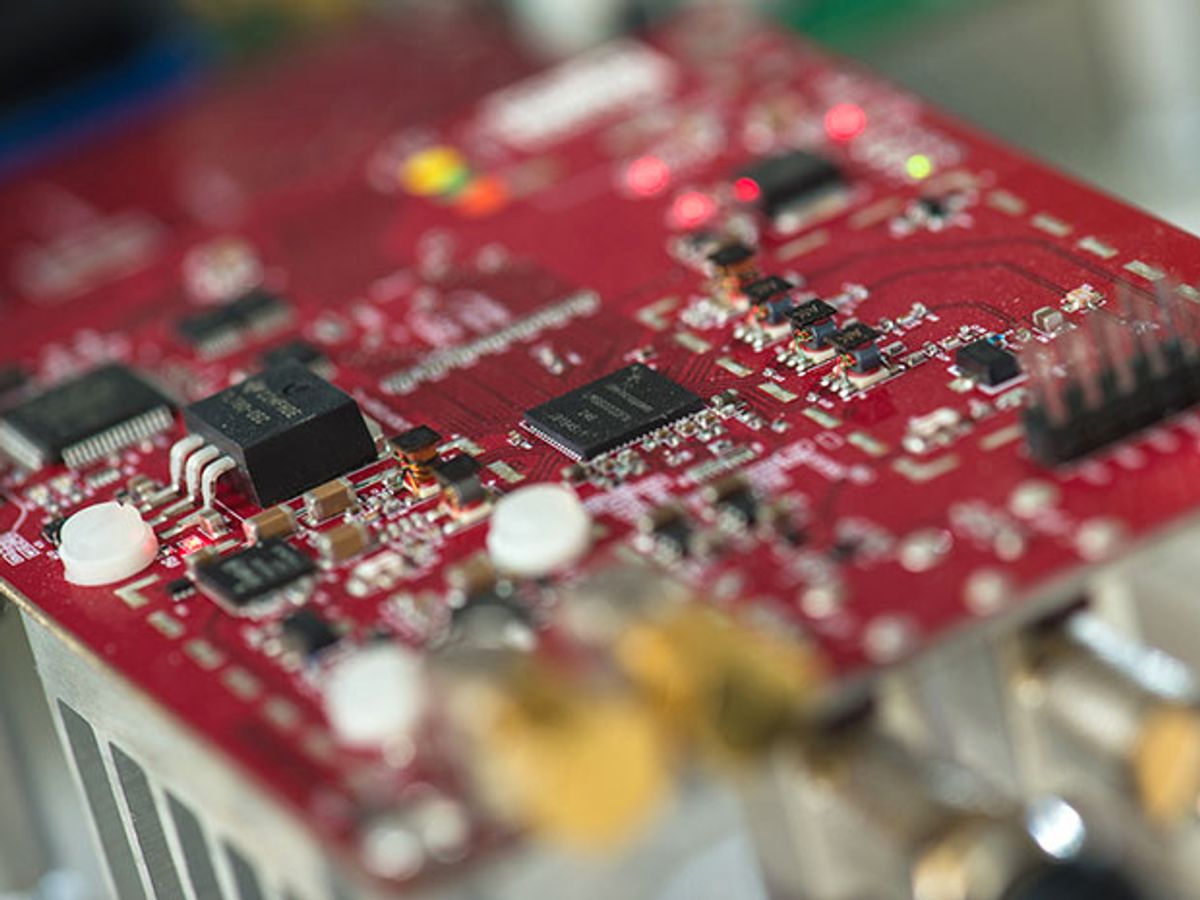Internet providers have been hoping to get their hands on precious low frequency UHF channels unused by broadcast TV. But maybe they can share those that are still in use. Engineers at Rice University in Houston, Tex., created the first device that allows wireless Internet in a UHF channel that is already occupied by a TV broadcast.
Sending wireless data through this 400 megahertz to 700 MHz slice of spectrum is often referred to as “super Wi-Fi” because of its ability to penetrate through buildings and travel long distances. Such superpowers could allow Internet coverage in secluded areas that traditional terrestrial broadband cannot economically reach.
However, unused UHF channels, commonly referred to as TV white-spaces, are scarce. In big cities such as Houston, where the study was conducted, there is only one unused channel. In New York and Los Angeles there are none.
“Instead of all television or all wireless connection, how can we do both?” asked Edward Knightly, the professor of electrical and computer engineering who led the research.
The Rice University engineers called their answer “Wi-Fi in Active TV Channels”, or WATCH. They had to gain approval from the U.S. Federal Communications Commission to test it.
The WATCH spectrum sharing system works on a feedback loop. It is continuously watching for whenever a viewer is not watching a TV channel. The system consists of a special Wi-Fi transmitter and a receiver in a person’s home and requires a smart TV.
Currently, TV towers occupy a whole channel no matter how many viewers are watching at a given time, says one of the study’s researchers, Xu Zhang. “Even though these channels are being occupied by TV broadcasters most people use cable, satellite, or Internet to watch television,” he says. “That means these TV broadcasters are wasting spectrum.”
But under the WATCH system, a user’s TV viewing information is sent to a spectrum database by smartphone remote control and smart TV. This database updates the WATCH receiver telling it that it can cancel out the TV broadcast and use the channel to send data via the WATCH transmitter. If the viewer flips back to that channel, another signal is sent to the spectrum database, updating the WATCH system. The system then would move its data stream to a different channel to keep from interfering with the user’s TV viewing experience.
WATCH also takes into consideration what channels neighbors are watching, so Wi-Fi streaming doesn’t interfere with their TV signal, says Zhang. If a next-door neighbor wants to watch the channel WATCH is using to stream Wi-Fi, then the system will locate and use channel that has no nearby viewers.
The engineers found that their system could provide six times as much wireless data—24 megabits per second—as TV white-space systems in use today, which only utilize unoccupied UHF channels.
“The system provides a step towards improved utilization of UHF frequency bands,” says Knightly. “There are implications that this could allow wireless Internet access in difficult to reach places and underserved areas.”
Wireless companies, such as Carlson Wireless Technologies, are already looking to UHF channels to provide connectivity in underdeveloped countries.
There is a much larger need for Internet connectivity than television in developing countries, says James Carlson, founder and CEO of Carlson Wireless Technologies. “People would rather leap-frog technology that will soon be obsolete.”
Carlson Wireless plans to deploy 3-G wireless service over TV white-space in Africa and parts of South and Southeast Asia later this year, and in the United States in 2016.
For WATCH’s use in the United States, “the biggest challenge is getting FCC approval,” says Knightly. “This particular solution requires FCC collaboration in order to deploy it.”



